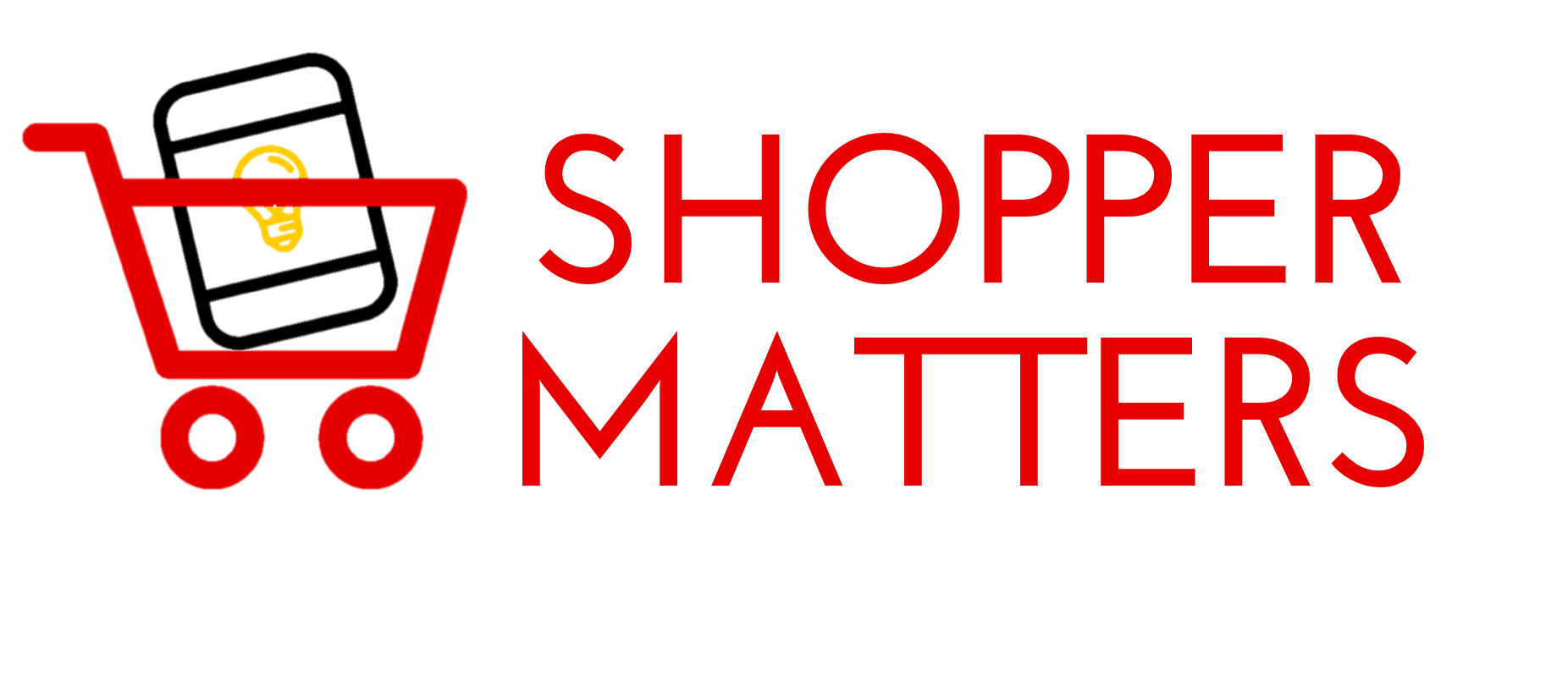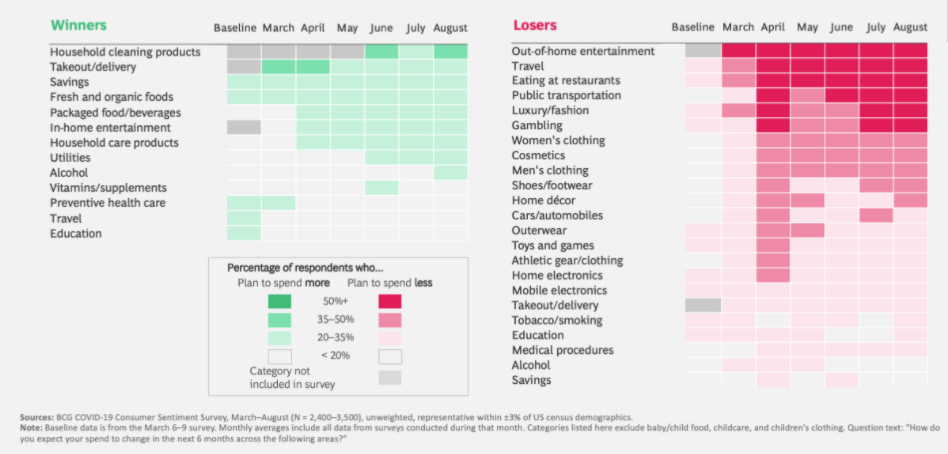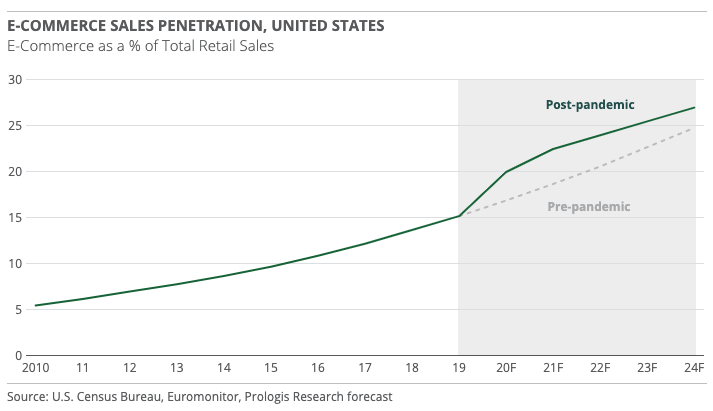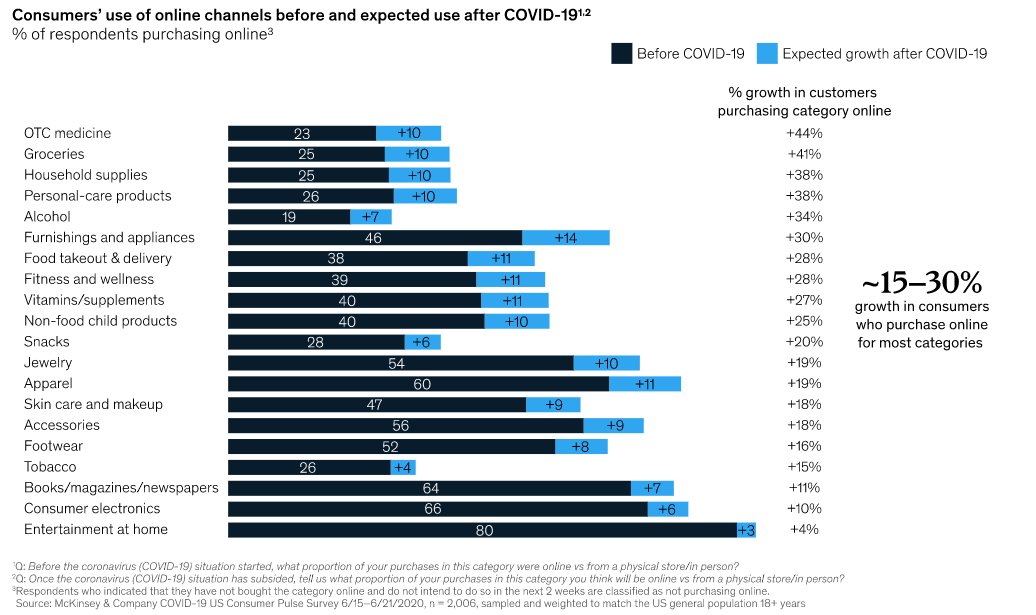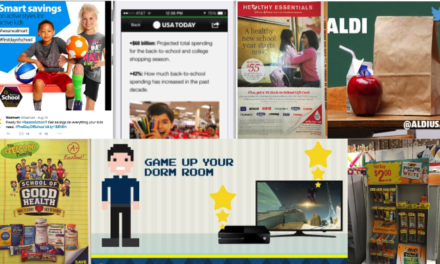CHANGES OF PANDEMIC PROPORTIONS
We are creatures of habit. It takes a lot for us to change our behavior.
A pandemic of global proportions certainly qualifies.
It’s been six months since the World Health Organization officially dubbed the COVID-19 outbreak as a pandemic, and the United States declared a national emergency.
During the COVID-19 pandemic, we’ve all had to manage rapid change and uncertainty. Circumstances have jolted people out of their regular routines. With so much out of our hands, it’s led to confusion, frustration, and, yes, behavioral changes.
So much has changed so fast. And, so much has been published about the impact of the pandemic. In some cases, too much. So, in keeping with the theme of rapid change (emphasis on quick), let’s look at 6 months of consumer behavior change in 6 charts.
1) Our Daily Activities have Shifted Dramatically (Digital)
To say our world shut down overnight is not an understatement.
Schools and businesses closed their doors. Events shut down as did travel.
As a result of social distancing at home, we spent more time virtually connecting and digitally engaging.
At home media consumption changed drastically. People are spending more time online.
Consumers are more connected than ever using digital to research, entertain themselves and work…sometimes all at the same time.
The opportunities to reach people via digital have never been greater.
2) Consumer confidence has plummeted
The Consumer Confidence Survey® reflects current business conditions and likely developments for the months ahead. It is a monthly report covering consumer attitudes and buying intentions.
According to The Conference Board, consumer confidence has weakened significantly with the overall index falling from 118.8 in March to 84.8.9 in August, the lowest reading since June 2014.
The Conference Board Consumer Confidence Index® August 2020
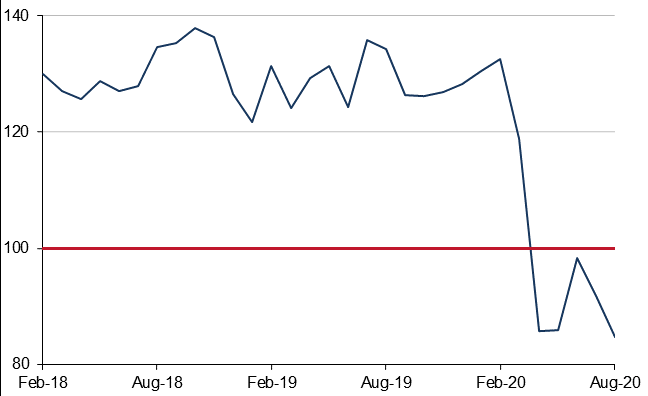
3) E-Commerce is Going Up, Up, Up
Facing the prospect of COVID, US consumers shifted their shopping to online…in a big way.
In Q2 2020, US retail e-commerce sales grew by almost one third (31.8%) compared to the previous quarter. Compared to the prior year, e-commerce sales for the first half of 2020 totaled $347.26 billion, up 30.1%.
Online sales – for the first time – were enough to offset losses from the closure of physical retail. Total retail sales increased 4.0% in the first half of the year. Yet, e-commerce grew more than 5 percentage points of the total retail pie, now accounting for 18.6% of all retail sales.
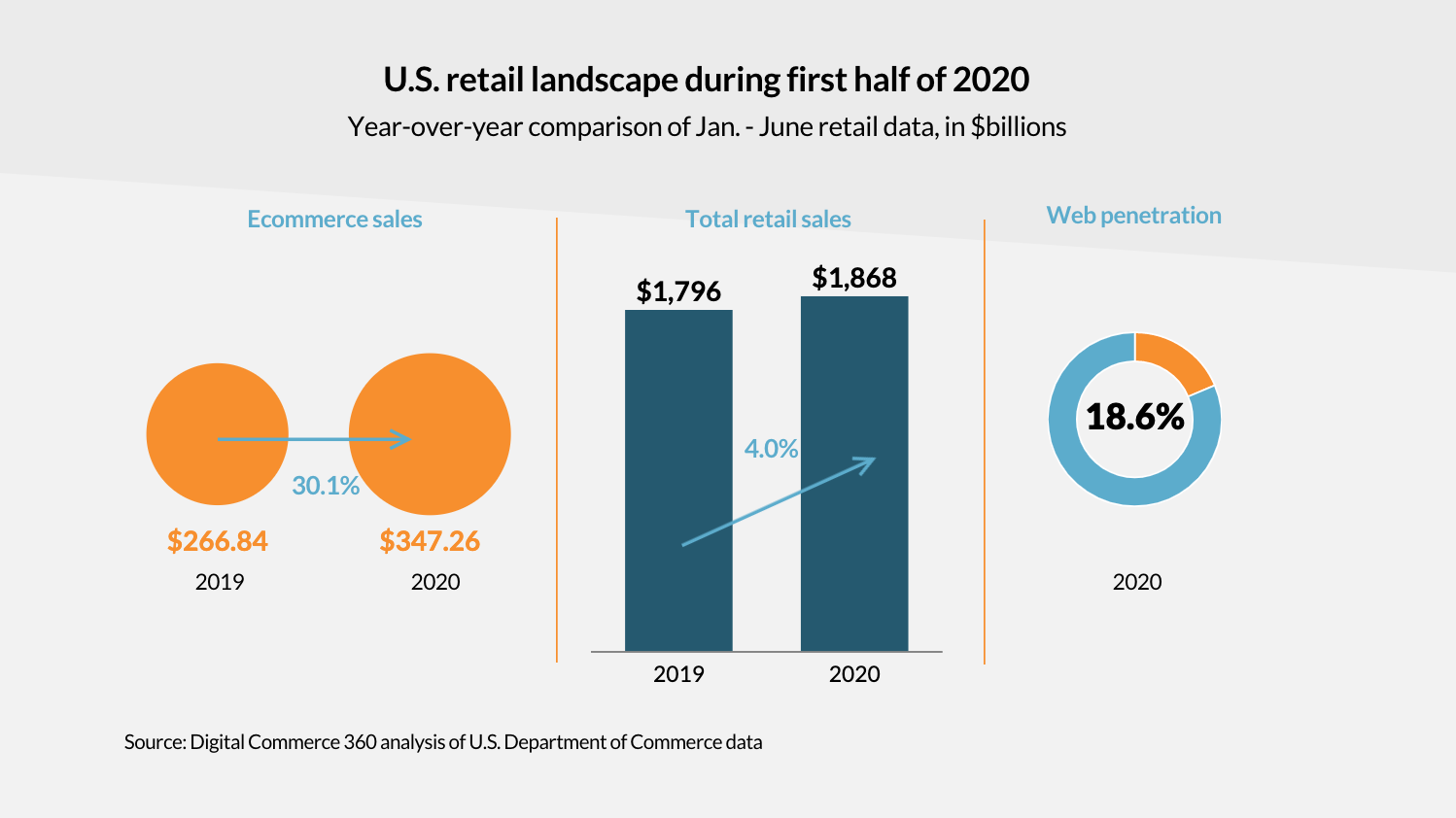
4) there are clear winners and losers
This goes beyond just toilet paper and hand sanitizer.
There are clear winners and losers in terms of categories of consumer spending.
While there are signs of stabilization in consumer sentiment, spending expectations remain well below pre-COVID-19 levels. Boston Consulting Group (BCG) shares great info for marketers looking for insight into future consumer spending.
5) covid HAS ACCELERATED THE physical to digital SHIFT
The pandemic has accelerated retail’s shift from physical stores to digital commerce.
As shown previously, e-commerce now accounts for just under 19% of the total retail pie. The adage that “90% of sales still happen in physical stores” no longer holds true.
In fact, many claim the shift from physical to digital has advanced five years forward in the past six months.
The chart below captures this acceleration and e-commerce’s post-pandemic path forward.
6) use of digital channels won’T slow down
Digital is a key influence for shopping and buying, regardless of where the purchase happened.
Post COVID, more people expect to make a greater portion of their purchases online.
A recent survey from McKinsey & Company highlights growth by category. The average growth in consumers who purchase online is expected to increase by 15-30% on average.
Clearly, there is no going back.
WHAT TO DO ABOUT 6 Months of consumer behavior CHANGE
The changes we’ve seen in 6 months of consumer behavior (in just 6 charts) is significant.
More interestingly, these habits seem likely to stick.
Beyond just fascinating to watch, all brands must take into these trends into account over the next six months (and beyond) as they plan (and replan) marketing efforts.
